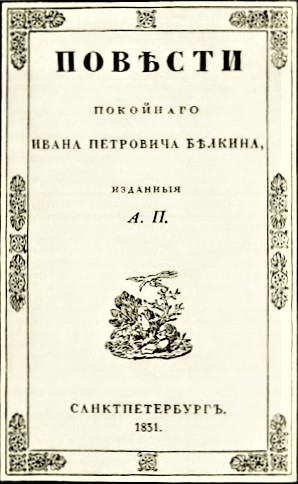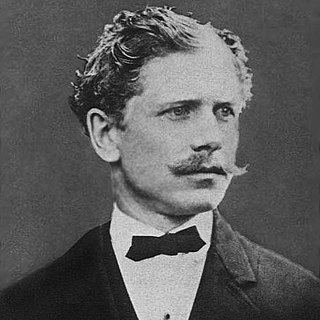"Beyond the Wall" is a ghost story by American Civil War soldier, wit, and writer Ambrose Bierce. It was published by Cosmopolitan in December 1907.
"Beyond the Wall" is a ghost story by American Civil War soldier, wit, and writer Ambrose Bierce. It was published by Cosmopolitan in December 1907.
The narrator visits his strange friend in San Francisco. They have dinner up in the tower within the house. As they are eating, there is a knocking on the wall that disturbs the narrator. The friend tells him to explore it. They discover there is only the outside behind the wall from which he had heard the sound. The friend explains that he has heard this knocking before and that he was happy the narrator also witnessed it.
The friend then goes into a tale about his earlier days. He was exiting his apartment when he met a young beautiful woman. He fell in love with this woman and found pretexts to visit her. He also discovered that they shared an adjacent wall. However, he never entirely moved forward with pursuing the young woman because they were not of equal class.
The man began to knock on the wall and she reciprocated. This continued for a time until she stopped knocking. The man grew disappointed and even resentful. When he did hear a knocking some time later, he chose to ignore it. The next morning, he discovered that the woman had been bedridden with illness and in her last night on earth demanded to have her bed moved to the other side so she could knock on the wall.
The man finishes the story and the narrator wishes him good night. He adds that his friend died that very night: "Alone with his sorrow and remorse, he passed into the Unknown".
S. T. Joshi lists "Beyond the Wall" among a handful of Bierce's "simple tales of revenge in which the supernatural is a scarcely veiled metaphor for the conscience of the guilty". [1]
Some critics dismiss "Beyond the Wall" as a "lackluster and unimaginative" retread of Bierce's "spectacular" early story "The Middle Toe of the Right Foot" (1891). [2]
"Beyond the Wall" is notable for describing San Francisco as "a desolate, foggy, and mysterious" place, an image that would be popularized by noir fiction in the mid-20th century. [3]

The Devil's Dictionary is a satirical dictionary written by American journalist Ambrose Bierce, consisting of common words followed by humorous and satirical definitions. The lexicon was written over three decades as a series of installments for magazines and newspapers. Bierce's witty definitions were imitated and plagiarized for years before he gathered them into books, first as The Cynic's Word Book in 1906 and then in a more complete version as The Devil's Dictionary in 1911.

"An Occurrence at Owl Creek Bridge" (1890) is a short story by American writer and Civil War veteran Ambrose Bierce, described as "one of the most famous and frequently anthologized stories in American literature". It was originally published by The San Francisco Examiner on July 13, 1890, and was first collected in Bierce's book Tales of Soldiers and Civilians (1891). The story is set during the American Civil War and is known for its irregular time sequence and twist ending. Bierce's abandonment of strict linear narration in favor of the internal mind of the protagonist is an early example of the stream of consciousness narrative mode.

"The Rats in the Walls" is a short story by American author H. P. Lovecraft. Written in August–September 1923, it was first published in Weird Tales, March 1924.

The Tales of the Late Ivan Petrovich Belkin is a series of five short stories and a fictional editorial introduction by Russian author Aleksandr Pushkin. The collection is opened with the editorial, in which Pushkin pretends to be the verbose publisher of Belkin's tales. The tales themselves are not related to one another, except that they are all said in the introduction to be stories told by various people to a recently deceased landowner, Ivan Petrovich Belkin. The introduction continues to say that Belkin was an interesting and mysterious man, even to the point that the woman he left his estate to had never met him. It is also mentioned that Belkin's favorite pastime was to collect and hear stories, several of which are to be presented to the reader.

William Chambers Morrow was an American writer, now noted mainly for his short stories of horror and suspense. He is probably best known for the much-anthologised story "His Unconquerable Enemy" (1889), about the implacable revenge of a servant whose limbs have been amputated on the orders of a cruel rajah.

"Medusa's Coil" is a short story by H. P. Lovecraft and Zealia Bishop. It was first published in Weird Tales magazine in January 1939, two years after Lovecraft's death. The story concerns the son of an American plantation owner who brings back from Paris a new wife. It mixes elements of Lovecraft's Cthulhu Mythos with the ancient Greek myth of Medusa, but it has also been noted for its racist aspects.

Dhund is a 1973 Hindi thriller movie produced and directed by B. R. Chopra. It stars Sanjay Khan, Zeenat Aman, Danny Denzongpa, Deven Verma, Madan Puri, Navin Nischol and Ashok Kumar. The music is by Ravi. The film was successful at the box office.

In Black and White is a collection of eight short stories by Rudyard Kipling which was first published in a booklet of 108 pages as no. 3 of A H Wheeler & Co.’s Indian Railway Library in 1888. It was subsequently published in a book along with nos 1 and 2, Soldiers Three (1888) and The Story of the Gadsbys, as Soldiers Three (1899). The characters about whom the stories are concerned are native Indians, rather than the British for writing about whom Kipling may be better known; four of the stories are narrated by the Indians, and four by an observant wise English journalist. The stories are:

Ambrose Gwinnett Bierce was an American short story writer, journalist, poet, and American Civil War veteran. His book The Devil's Dictionary was named one of "The 100 Greatest Masterpieces of American Literature" by the American Revolution Bicentennial Administration. His story "An Occurrence at Owl Creek Bridge" has been described as "one of the most famous and frequently anthologized stories in American literature", and his book Tales of Soldiers and Civilians was named by the Grolier Club one of the 100 most influential American books printed before 1900.

"A Warning to the Curious" is a ghost story by British writer M. R. James, included in his book A Warning to the Curious and Other Ghost Stories first published in 1925. The tale tells the story of Paxton, an antiquarian and archaeologist who holidays in "Seaburgh" and inadvertently stumbles across one of the three lost crowns of East Anglia, which legendarily protect the country from invasion. Upon digging up the crown, Paxton is stalked by its supernatural guardian. Written a few years after the end of the First World War, "A Warning to the Curious" ranks as one of M. R. James's bleakest stories.
"The Moonlit Road" is a gothic horror short story by American Civil War soldier, wit, and writer Ambrose Bierce. It first appeared in a 1907 issue of Cosmopolitan magazine, illustrated by Charles B. Falls. This story is presented in three parts and relates the tale of the murder of Julia Hetman from the perspective of her son, a man who may be her husband, and Julia herself, through a medium.
"Killed at Resaca" is a short story by American Civil War soldier, wit, and writer Ambrose Bierce. First published in The San Francisco Examiner on June 5, 1887, it was later included in Bierce's Tales of Soldiers and Civilians in 1891.
The Poor Clare is a short story by English Victorian writer Elizabeth Gaskell. First serialised in three installments in 1856 Charles Dickens' popular magazine Household Words, The Poor Clare is a gothic ghost story about a young woman unwittingly cursed by her own grandmother.
"The Man and the Snake" is a short story by American Civil War soldier, wit, and writer Ambrose Bierce. It tells of a man who dies of fright inspired by a toy snake with buttons for eyes. The story was published in The San Francisco Examiner on June 29, 1890.
"The Eyes of the Panther" is a short story by American Civil War soldier, wit, and writer Ambrose Bierce featuring a female werepanther. It was published in The San Francisco Examiner on 17 October, 1897 before appearing in his 1898 collection In the Midst of Life.
"The Boarded Window: An Incident in the Life of an Ohio Pioneer" is a short story by American Civil War soldier and writer Ambrose Bierce. It was first published in The San Francisco Examiner on April 12, 1891, and was reprinted the same year in Bierce's collection Tales of Soldiers and Civilians. The setting for the story is the part of Ohio where Bierce's family lived until 1846.
"One of Twins" is a short story by American Civil War soldier, wit, and writer Ambrose Bierce exploring a telepathic connection between the twins. It was first published in The San Francisco Examiner on October 28, 1888 and was included in Bierce's 1893 collection of supernatural tales Can Such Things Be?

"The Death of Halpin Frayser" is a Gothic ghost story by Ambrose Bierce. It was first published in the San Francisco periodical The Wave on December 19, 1891 before appearing in the 1893 collection Can Such Things Be?

"The Realm of the Unreal" is a short story by American Civil War soldier, wit, and writer Ambrose Bierce. It appeared in The San Francisco Examiner on July 20, 1890 and was reprinted in the 1893 collection Can Such Things Be?
Kissing the Witch is a collection of interconnected fictional short stories written by Irish-Canadian Emma Donoghue. Each of the thirteen stories in the collection is an adaptation of a well-known European fairy tale, with several tales featuring feminist and queer themes. The stories are linked together by a narrative structure where the narrator of the previous story becomes the listener of the story that follows. None of the narrators or characters are named, instead being referred to via epithets and aliases. The book, originally published in 1997 by Hamish Hamilton Ltd., was Donoghue's third published fiction novel and first short story collection. Following its release, Kissing the Witch was translated into Dutch (1997), Catalan (2000), and Italian (2007).